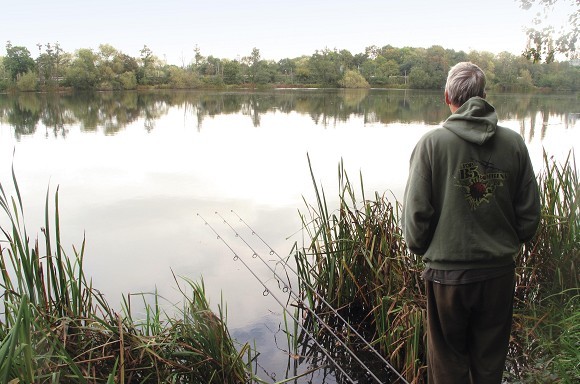
What should you look for when you target a new venue?
Our panel of experts reveal their thoughts when it comes to the 'other' areas of watercraft. Aside from the obvious, what else should you be looking for?
The big question
We all understand the importance of location and watercraft, however, apart from the obvious things like prevailing winds, lake features, i.e. bars, islands, weedbeds etc., what other things do you look for when moving onto a new water for the first time?
Luke Church
“When moving on to a new water, personally I would be spending lots of time at the lake whether I was fishing or not. I would make sure I was at the water early morning and late evening when the fish are at their most active. I would always do several laps of the lake (depending on the size), finding any safe trees to climb, just looking for signs of fish activity i.e. fish showing, reeds twitching, clear spots in the margins where fish may have been feeding and looking for any bubblers/fizzing.
“Regardless of the lake’s features, visible or not, if you can work out the carps’ patrol routes on a new lake then you are halfway there to catching them in my eyes. Just to add to this, over a period of time you may start to see a pattern emerging on how the fish are behaving: what they are doing, when and why? This will start to make your life a lot easier upon arriving at the lake and deciding where you want to start fishing.
“Stating the obvious I know, but another key thing I would be looking for is information from the local anglers/bailiffs. This is something not to be sniffed at. Remember, the likelihood is that these people have already watched the water for endless hours and have also caught numerous fish from the lake, so any info you can get would be very beneficial to your new campaign.”
Nick Burrage
“One thing I take a lot of time watching is the wildlife. Ducks, coots and even swans; they always seem to give the carp’s location away and spots alike. A screaming coot as a carp rolls is a dead giveaway, and even if you didn’t see the carp roll, a new location in the direction of the foghorn coot is well worth a look.
“Turning up on a settled, quiet lake, I have found the carp more often than not in the same area as the bird life; birds picking food out of the feeding carp’s blows from deep below. Coots diving on a heavy baited spot is worth keeping an eye on; one it shows where other anglers fish and two, a coot darting up from the depths is a sure way of knowing there’s a water pig about!
“Ducks do the same but in the warmer months, even while on the surface, a pulled in neck and a sudden change in direction shows a big ‘un has swam across its path. I use them as my carp spies all the time when I’m on the bank.
“Along with the birds, coloured water, weather patterns and the obvious carp lumping out, it’s not long before I find a carpy prize to target!”
Rick Gardner
“When approaching a new water, apart from the obvious aspect of actual fish location, I always look at the other anglers and angler pressure. Fishing busier waters it’s very easy to follow the crowd and jump straight in on what is the going method or tactic, however, I would much rather do my own thing and not follow everyone else, and as a consequence get the same results as everyone else.
“Seeing what others are doing will give you edge in baiting approaches too, and if they are all tightly spodding to precise spots, I’ll want to spread my bait out, or use singles just to be different. Even more importantly, once I’ve identified the most popular swims I can actively look for fish in the more neglected areas, which is where the angler that hits these first can really reap continued good results. That said, the popular swims can still produce well, but away from the going spots fished out by everyone else.
“I remember a swim on one of the lakes I used to fish that was by far the most popular, and in fact seldom free. When one would leave and another angler went in and their marker floats would be in exactly the same place! I did well in this swim by deliberately fishing away from these known areas; in fact on all lakes I particularly favour spots between two swims that are generally left alone. Most will fish straight out, but with more and more pressure the fish will seek parts of the lake away from lines, which I know they are far more wary of than rigs or baits. These un-fished parts are what I am looking for, and if I can find firm silt rather than blatant gravel here that’s what I would be targeting.”






